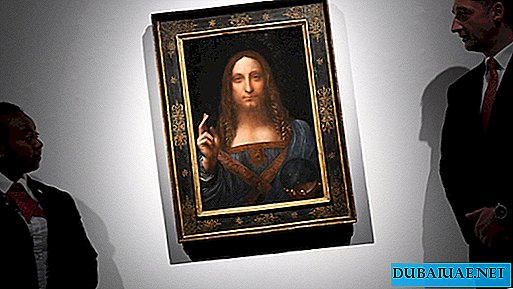"EMILIO PUCCI" LEGENDARY ITALIAN FASHION HOUSE IS CLOSING TO ITS 61TH ANNIVERSARY. Many experts believe that he is experiencing his second birth thanks to the amazing collections of the current creative director of the house of Peter Dundas.
 The designer is determined to return Emilio Pucci brand to its former glory and firmly secure its place among the best "couturiers of the world." It is no secret that with the advent of Peter, the brand became one of the main favorites of all the “red carpet”, and is very popular among the most famous world fashionistas, and this only speaks of the development strategy that the young designer chose correctly. What is Dundas repelled from and what moves him forward? Back to the story, not so distant ...
The designer is determined to return Emilio Pucci brand to its former glory and firmly secure its place among the best "couturiers of the world." It is no secret that with the advent of Peter, the brand became one of the main favorites of all the “red carpet”, and is very popular among the most famous world fashionistas, and this only speaks of the development strategy that the young designer chose correctly. What is Dundas repelled from and what moves him forward? Back to the story, not so distant ...
Into the abyss of fashion
The founder of the eponymous fashion brand Emilio Pucci, Marquis Emilio Pucci di Barsento was a native of a wealthy and noble Florentine family. From childhood Emilio knew a lot about clothes and was observant. True, by the 50s the family became poor in order, but not so much as to squander former greatness: in 1951, a new fashion house was born in Pucci's family palace in Florence. In 1956, a firm called Emilio Pucci was finally officially registered.
But the information of the Marquis di Barsento himself is foggy: versions, he was born on the other - he was a Florentine. studied at the university then left for the USA lived training in the state of Georgia Portland, the state he graduated from the faculty of geography of Bologna received a degree in becoming a world designer, he was famous for being a member of the national airborne alpine skiing Secular lion, the dandy was always surrounded by noble women , the love of which prompted him his first design experience, he acquired at the university, gia, between the university ski team.
Today, even family chroniclers argue about what was Emilio Pucci's first creation: the same famous capri pants or ski suit — tight-fitting pants and a colorful puffer jacket. While the Austrians and Germans fought over the greater technological effectiveness of these clothes, Pucci took up her appearance, than immediately attracted the attention of the beau monde.
In 1947, a photograph of Emilio Pucci with a companion in a ski suit of his composition was printed by American Harper's Bazaar. The mighty Diana Vreeland, who was at the helm of the publication at that time, immediately recognized the future star in the thoroughbred Italian, and already in 1948, with her supply, the first Pucci collection entered American stores.
Emilio was lucky, as his ideas coincided with the mood of post-war society and were immediately in demand. America, barely recovering from the Second World War, longed for relaxation and travel, and the clothes from Pucci perfectly matched these needs. In the first season, the designer developed a whole compact wardrobe, which became indispensable for short trips out of town and to the sea. Emilio Pucci, who refused tight corsets, giant false shoulders and lush underskirts in the women's wardrobe, offering ladies comfortable and light silhouettes that naturally fit the figure, the journalists immediately called him “the king of everyday couture”.
In fact, it was he who introduced the fashion for what we now call leisure clothing, significantly expanding access to designer clothes of large segments of the population. The designer offered both high and fairly affordable prices for their products. Therefore, rich ladies and middle-income women could buy his clothes. By the way, the first Pucci collections were monophonic, only after some time the Marquis Emilio Pucci came to his unique, "recognizable by a mile away", as they liked to joke in Europe, prints.
Fishing pants and beau monde

In 1949, the designer opened a store on the Italian island of Capri. The place was not chosen by chance: at that time, famous politicians and movie stars, wealthy Americans and European aristocrats loved to come here.
They all began their stay with a visit to the Pucci brand boutique. Then there were shops in Rome, on the Elbe and in Montecatini.

It was during this period that Emilio created women's capri pants, an element of a fashionable wardrobe. The idea for these trousers, without which today a trip to fashionable resorts and even just urban life is unthinkable, Pucci spied on the Capri fishermen who tucked their pants in order not to wet them while working in the boat. He also came up with very wide palazzo trousers, anorak jackets with hoods, printed tights, later revived in the form of leggings, tunic dresses and evening pajamas in oriental style. One of the first Emilio began to use stretch fabrics for the production of swimwear, and then for dresses and blouses that did not crumple. But still, his main inventions are famous prints.
The sea with the islands scattered around it, obviously, left an indelible mark on Emilio’s imagination and later turned into patterns of flowing, outlined colored stripes that form abstract patterns. The world first saw them in 1956, and since then Pucci House has not changed its image. Outstripping pop art for almost a decade, Emilio Pucci used both psychedelic abstract designs and traditional floral motifs, wave-like transitions, classic men's stripes and harlequin rhombuses for his luxurious fabrics.
Since Emilio was familiar with the best families of Florence, Naples, Milan and not only from childhood, girls from high society in Europe immediately became his first clients. His clothes quickly became a symbol of high social status, and the American nouveau riche were ready to pay any money for clothes from the Italian marquise. Pucci was the only Italian designer to conquer the American market in the 1960s.
Authority from Florence
The sixties were the era of the brilliant triumph of the Pucci house: Emilio began working with a silk jersey, making pants, blouses and pajamas flowing silhouettes with colorful prints. Initially, these prints were spied on him on the flag of the neighboring city of Siena, and then they were thought up and finally decorated in a corporate design, which many today consider to be a symbol of the 1960s. Pucciemania swept the whole planet. In 1966, Vivara branded perfume was first introduced to the general public in Acapulco. Emilio became a real celebrity of Florence - his authority was so high and recognized that for many years he was given a special honor to lead the famous Florentine parades riding a white horse.
Countess Marie-Christine of Kent, wife of Prince Michael of Kent, loves to talk about the fact that every season Emilio sent her a stack of silk shirts from the new collection. Jacqueline Kennedy had a separate shelf in the closet, only scarves from Pucci were stored, and Sofia Loren annually addressed the maestro every spring so that he personally composed her summer wardrobe. All the fashion magazines of that time did not miss the opportunity to emphasize, the dresses from Pucci were light and comfortable, and Paloma Picasso noted: "They are unique - get them out of the suitcase, shake them, wear them to go to the party." Outfits of this brand were given preference by such eminent persons as Lauren Bacall, Gene Lollobrigida, Grace Kelly, Elizabeth and Marilyn Monroe. In October 1967, the Boston Globe newspaper wrote that "Pucci clothing is becoming as much a symbol of status as furs and diamonds."
Emilio Pucci was always very reverent about the quality of his products: if at any stage of the fitting he saw that some part violated the silhouette line, making it longer or shorter than it should, he mercilessly tore the dress and demanded to start all over again. However, he often did not put a full name on his creations, but simply wrote Emilio - they say that the whole world knows him. There is a version that at first the designer tried not to sign his products with a surname in order to preserve the honor of an aristocratic family.
In those same years, Emilio came up with the logo for Apollo 15, NASA's lunar mission, and designed the uniforms of Braniff’s U.S. airline staff. The funny “bubble helmet” (essentially a transparent hood) from Pucci was designed to protect stewardess hairstyles during transitions between terminals from rain and air currents. In addition to wardrobe items, Pucci prepared interior design, came up with logos, drawings on porcelain vases and bedding. For many years, Emilio made illustrations in the most famous world fashion magazines, and in 1977 even developed a unique Lincoln Continental Mark IV car interior design for the Ford Motor Company.
The seventies, with their psychedelicism and passion for folklore, also became the decade of the triumphant popularity of Pucci House. But for the businesslike 1980s, his temperament was already a bust. The nineties could be the era of a new take-off of Pucci, but the revival coincided with the retirement and death of the founder of the fashion house.
Long live Pucci!
Emilio Pucci passed away in 1992 at the age of 78, and the reins of family business passed into the hands of his daughter Laudomy. In 2000, the French concern LVMH acquired 67% of its shares, instructing the heiress to deal only with the image of the brand, and the well-known “Patchiman”, French couturier Christian Lacroix, took up the clothing line. After three years spent as a designer on the post, he was replaced by a native of Manchester suburb and an adherent of the London design school Matthew Williamson. The year 2008 was marked by the arrival of the Norwegian designer Peter Dundas in the fashion house, who managed to combine traditional Florentine Pucci motifs with a new, modern aesthetic. As in the distant 1947, the main feature of the brand are unusually colorful prints. The company does not just produce clothes, shoes and accessories for women, it offers a lifestyle from Pucci with collections of dresses and blouses, underwear and bedding, swimwear, bags, branded perfumes and even carpets. Pucci is a world of extravagant women! It is no coincidence that there are many stellar names among the faithful Pucci fans: Madonna, Naomi Campbell, Brooke Shields, Jennifer Lopez, Julia Roberts, Kylie Minogue and Jennifer Aniston. All of them again choose the psychedelic patterns of Pucci.
Of the men's belongings of Emilio Pucci, there are only ties and shirts. Alas and ah! By the way, no fashion trends have passed the Pucci brand. He, like many other brands of the modern fashion industry, began cooperation with other Houses, creating unique things worthy of being called works of art. For example, a few years ago, the Adicolor line was created - Adidas sneakers with Pucci signature prints. Since 2004, Emilio Pucci, in partnership with the French sports company Rossignol, has again begun to create collections of ski suits. And this summer, Pucci released a collection of unique makeup in conjunction with the French house Guerlain. Today, Emilio Pucci products are presented in 44 brand boutiques around the world. What awaits fans of this extraordinary brand ahead? Time will tell. One thing is clear, while Peter Dundas’s progressive and bold ideas have not yet ended ...











